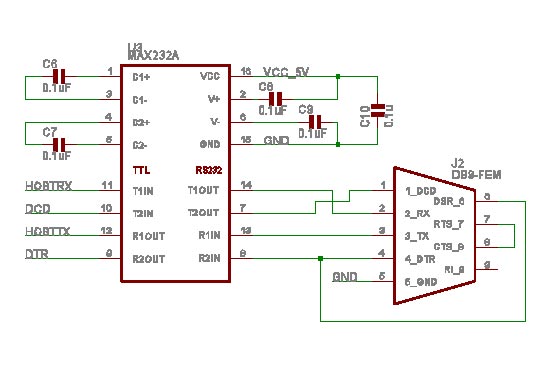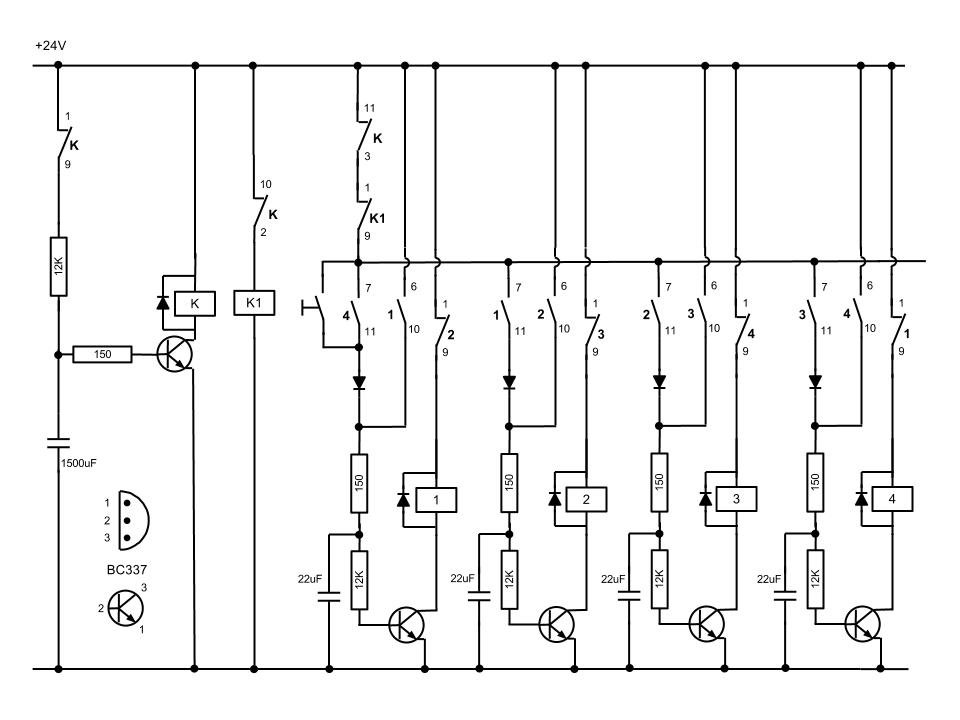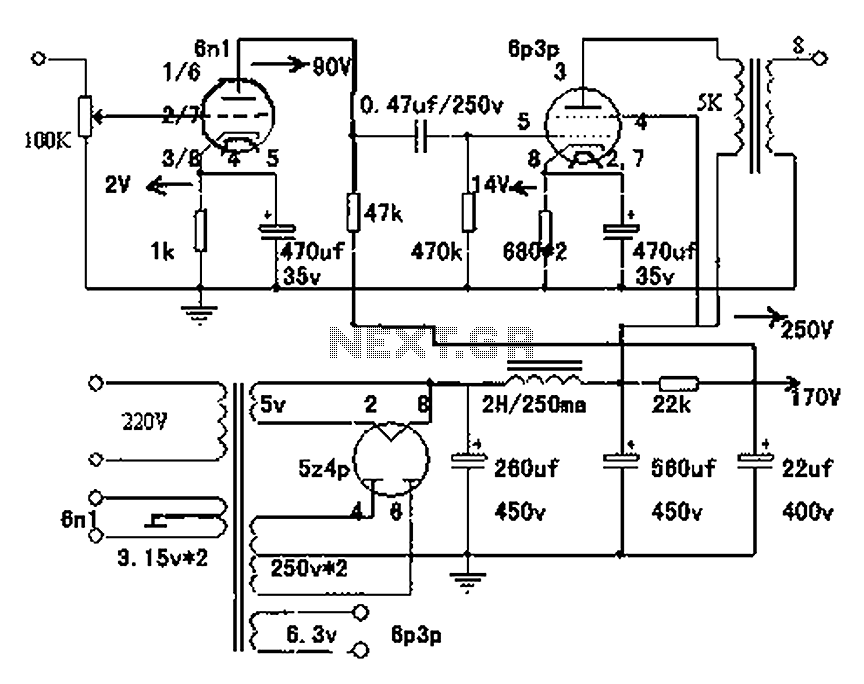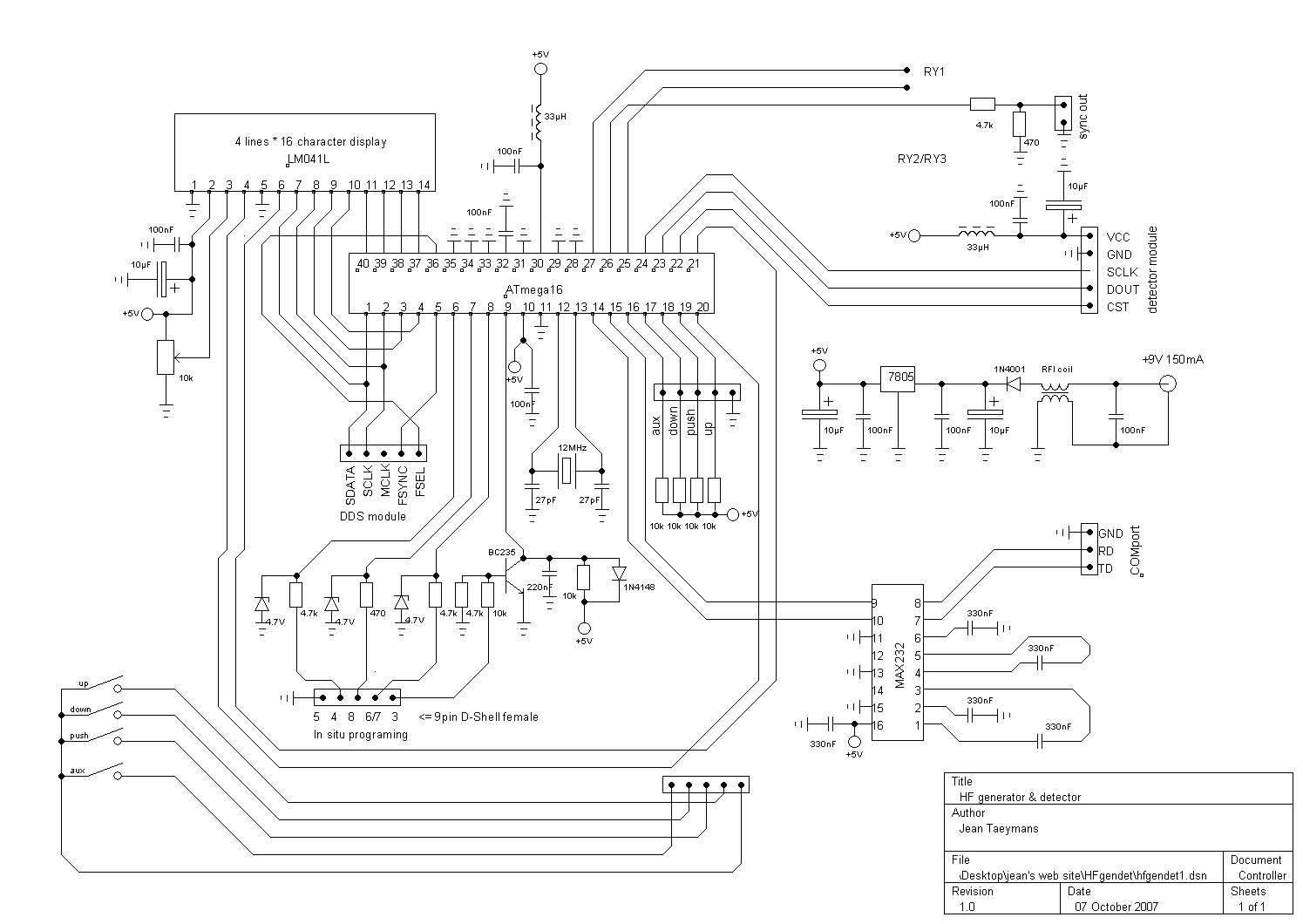
high-level accessory front end for the HF amateur bands
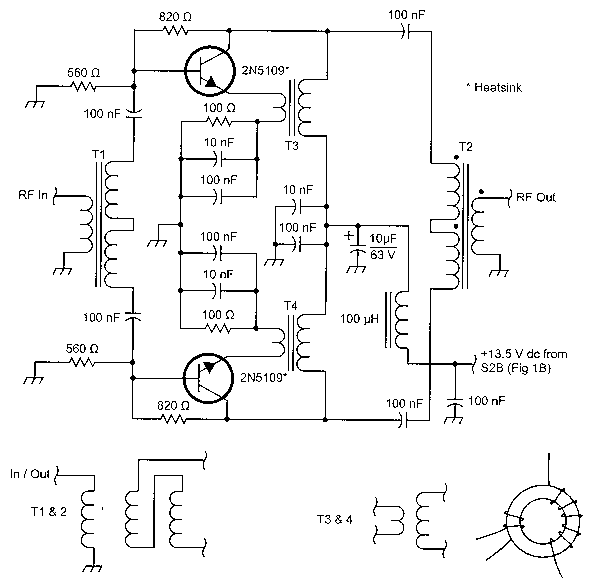
This is an antenna selector, preselector, attenuator, and preamplifier accessory designed for HF amateur transceivers. It enhances the receiver's IP2 for out-of-band signals and offers significant flexibility. The creators, enthusiasts of Amateur Radio, aim to optimize their equipment and improve their skills in operating under crowded band conditions during international contests. They have experience with various antenna configurations, including a short vertical antenna and several receive-only antennas, and have tested different setups to achieve better signal-to-noise ratios.
The described circuit serves as a multifaceted accessory for HF amateur transceivers, integrating several critical functions to enhance performance. The antenna selector allows users to choose between multiple antennas, optimizing reception based on current conditions. The preselector filters out unwanted frequencies, ensuring that only desired signals are amplified. The attenuator is crucial for managing signal levels, preventing overload in the receiver, particularly in crowded band situations. The preamplifier boosts weak signals, making it easier to detect DX or weak signals, which is essential for successful operations during contests or when exploring low-frequency bands.
The design incorporates various components that work together seamlessly. For instance, the preamplifier may utilize low-noise operational amplifiers (op-amps) to maintain signal integrity while boosting the signal strength. The attenuator can be implemented using resistive networks, allowing for adjustable attenuation levels to suit different reception scenarios. The preselector could include bandpass filters to isolate specific frequency ranges, enhancing the overall selectivity and sensitivity of the receiver.
This accessory is particularly valuable for operators working with a variety of antennas. For example, in addition to the short vertical antenna mentioned, operators can benefit from using receive-only antennas such as Beverages or K9AY loops. These antennas provide different radiation patterns and directivity, which can significantly affect reception quality. The combination of the antenna selector and preselector allows operators to switch between these antennas and filter signals effectively, thus improving their overall listening experience.
Moreover, the construction of the accessory should prioritize ease of use and integration with existing equipment. Enclosures should be designed to minimize interference and protect sensitive components. Proper grounding and shielding techniques are essential to prevent noise pickup, especially in environments with high electromagnetic interference.
In conclusion, this antenna selector, preselector, attenuator, and preamplifier accessory represents a comprehensive solution for enhancing HF amateur transceiver performance. By improving signal reception and providing flexibility in antenna selection, it empowers operators to maximize their capabilities in varied and challenging conditions.Here`s an antenna selector, Preselector, attenuator, preamplifier accessory for every HF amateur transceiver. It can improve your receiver`s IP2 for out-of-band signals and yield good flexibility. My father, I4FAF (an old-timer) and I both very much like Amateur Radio as a lifetime endeavor. We do not have backgrounds in electronic engineering, but we do have a lot of practice. My father is a fast builder ofAmateur Radio projects, from printed-circuit artwork drawn by him with CAD software to working units in our home laboratory. Being retired now, he has more time and I help him from time to time. Our goal is to get more from the Amateur Radio equipment available to us. Our gear is average, not toppriced. I want to improve my skills with DX or weak signals, while I operate in crowded bands during some international contests.
Lately, I have discovered the low-frequency bands. They have added more fun. In 2000, we started to put up (at a flat, country location) a short vertical antenna by Butternut, the HF2V It has the 160-meter coil kit, is top-loaded with four wires (each about 5 meters long) and has six ground radials about 40 meters long for 160, 80 and 40 meters. In winter 2001/2002, we started to test some receive-only antennas, with better signal-to-noise ratios and some directivity, in comparison to the 360 ° radiation pattern of a vertical antenna.
With the exception of Beverage and a four short vertical system presented by W8JI on his Web site, that still require much space for only -6 to -11dBi; most of the receive-only antennas we have considered are in the low-output category-in the range from -6 to -35 dBi. We have worked with Beverages, EWE, the delta-EWE by K6SE -a variation of pennant-flag antennas and K9AY loops.
We have seen them presented by our trusted teachers in recent artieles in Amateur Radio publications. For example, ON4UN`s Low Band DXING (third edition, don`t miss reading the new chapter "Special Receiving Antennas"), QST, the Antenna Compendium series and K1ZM`s DXing On the Edge-all published by ARRL.
There has also been some follow-up on the Internet and on the top-band reflector from W8JI, WA2WVL (EWE antenna), K6SE (delta-EWE and other pennants), WA1ION (pennant with remote variable control of the resistive, in-line termination), K9AY (K9AY loops, now also with remote variable control), K3KY (his Web site has a full collection of contributions, links, about low band antennas), W7IT-TV (rotatable flag) and other well-known authors. 1, 2, 3, 4, 5, 6, 7, 8, 9, 10, 11 There is a lot of interest and newcomers frequently ask, "What is the best receiving antenna for the low bands " I like the Beverage very much, hut my answer must be that I don`t know, simply because, until now, I have not been able to test them all.
Read K1ZM`s book. He agrees that it`s better for hams to have more types of antennas available on 160 meters. That is true because of the variable and peculiar propagation conditions on that band. 12, 13, 14 We tested a 177-meter-long, unidirectional Beverage configuration (for USA), up about 2 meters above ground (rural terrain), with a 500 © end load (two 1000 © resistors parallel connected to a ground rod) and an input impedance ratio of 1:9. The transformer was made of seven quadrifilar turns in parallel using #20 AWG or 0. 8-mm-diameter enameled copper wire. The core is an Amidon ferrite FT114-F with a permeability of 3000. Remember that this material, manganese-zinc, has a low bulk resistance, so it is best to cover the core with a thin layer of Teflon tape before winding the wire on it.
See John, ON4UN`s, third-edition book for a transformer picture and photo on page 7-17, Fig 7-18: "Modified transmission-line transformer". With our ground characteristics, we had better matching results with this ferrite mix than with the type 43 (permeability of 850) proposed in the book.
The thing was tested by us with help of a 🔗 External reference
The described circuit serves as a multifaceted accessory for HF amateur transceivers, integrating several critical functions to enhance performance. The antenna selector allows users to choose between multiple antennas, optimizing reception based on current conditions. The preselector filters out unwanted frequencies, ensuring that only desired signals are amplified. The attenuator is crucial for managing signal levels, preventing overload in the receiver, particularly in crowded band situations. The preamplifier boosts weak signals, making it easier to detect DX or weak signals, which is essential for successful operations during contests or when exploring low-frequency bands.
The design incorporates various components that work together seamlessly. For instance, the preamplifier may utilize low-noise operational amplifiers (op-amps) to maintain signal integrity while boosting the signal strength. The attenuator can be implemented using resistive networks, allowing for adjustable attenuation levels to suit different reception scenarios. The preselector could include bandpass filters to isolate specific frequency ranges, enhancing the overall selectivity and sensitivity of the receiver.
This accessory is particularly valuable for operators working with a variety of antennas. For example, in addition to the short vertical antenna mentioned, operators can benefit from using receive-only antennas such as Beverages or K9AY loops. These antennas provide different radiation patterns and directivity, which can significantly affect reception quality. The combination of the antenna selector and preselector allows operators to switch between these antennas and filter signals effectively, thus improving their overall listening experience.
Moreover, the construction of the accessory should prioritize ease of use and integration with existing equipment. Enclosures should be designed to minimize interference and protect sensitive components. Proper grounding and shielding techniques are essential to prevent noise pickup, especially in environments with high electromagnetic interference.
In conclusion, this antenna selector, preselector, attenuator, and preamplifier accessory represents a comprehensive solution for enhancing HF amateur transceiver performance. By improving signal reception and providing flexibility in antenna selection, it empowers operators to maximize their capabilities in varied and challenging conditions.Here`s an antenna selector, Preselector, attenuator, preamplifier accessory for every HF amateur transceiver. It can improve your receiver`s IP2 for out-of-band signals and yield good flexibility. My father, I4FAF (an old-timer) and I both very much like Amateur Radio as a lifetime endeavor. We do not have backgrounds in electronic engineering, but we do have a lot of practice. My father is a fast builder ofAmateur Radio projects, from printed-circuit artwork drawn by him with CAD software to working units in our home laboratory. Being retired now, he has more time and I help him from time to time. Our goal is to get more from the Amateur Radio equipment available to us. Our gear is average, not toppriced. I want to improve my skills with DX or weak signals, while I operate in crowded bands during some international contests.
Lately, I have discovered the low-frequency bands. They have added more fun. In 2000, we started to put up (at a flat, country location) a short vertical antenna by Butternut, the HF2V It has the 160-meter coil kit, is top-loaded with four wires (each about 5 meters long) and has six ground radials about 40 meters long for 160, 80 and 40 meters. In winter 2001/2002, we started to test some receive-only antennas, with better signal-to-noise ratios and some directivity, in comparison to the 360 ° radiation pattern of a vertical antenna.
With the exception of Beverage and a four short vertical system presented by W8JI on his Web site, that still require much space for only -6 to -11dBi; most of the receive-only antennas we have considered are in the low-output category-in the range from -6 to -35 dBi. We have worked with Beverages, EWE, the delta-EWE by K6SE -a variation of pennant-flag antennas and K9AY loops.
We have seen them presented by our trusted teachers in recent artieles in Amateur Radio publications. For example, ON4UN`s Low Band DXING (third edition, don`t miss reading the new chapter "Special Receiving Antennas"), QST, the Antenna Compendium series and K1ZM`s DXing On the Edge-all published by ARRL.
There has also been some follow-up on the Internet and on the top-band reflector from W8JI, WA2WVL (EWE antenna), K6SE (delta-EWE and other pennants), WA1ION (pennant with remote variable control of the resistive, in-line termination), K9AY (K9AY loops, now also with remote variable control), K3KY (his Web site has a full collection of contributions, links, about low band antennas), W7IT-TV (rotatable flag) and other well-known authors. 1, 2, 3, 4, 5, 6, 7, 8, 9, 10, 11 There is a lot of interest and newcomers frequently ask, "What is the best receiving antenna for the low bands " I like the Beverage very much, hut my answer must be that I don`t know, simply because, until now, I have not been able to test them all.
Read K1ZM`s book. He agrees that it`s better for hams to have more types of antennas available on 160 meters. That is true because of the variable and peculiar propagation conditions on that band. 12, 13, 14 We tested a 177-meter-long, unidirectional Beverage configuration (for USA), up about 2 meters above ground (rural terrain), with a 500 © end load (two 1000 © resistors parallel connected to a ground rod) and an input impedance ratio of 1:9. The transformer was made of seven quadrifilar turns in parallel using #20 AWG or 0. 8-mm-diameter enameled copper wire. The core is an Amidon ferrite FT114-F with a permeability of 3000. Remember that this material, manganese-zinc, has a low bulk resistance, so it is best to cover the core with a thin layer of Teflon tape before winding the wire on it.
See John, ON4UN`s, third-edition book for a transformer picture and photo on page 7-17, Fig 7-18: "Modified transmission-line transformer". With our ground characteristics, we had better matching results with this ferrite mix than with the type 43 (permeability of 850) proposed in the book.
The thing was tested by us with help of a 🔗 External reference
